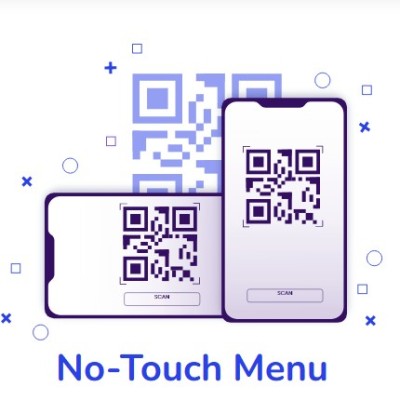For local businesses, understanding your customers' sentiments and loyalty is crucial. One of the most effective ways to gain this insight is through NPS (Net Promoter Score), a metric that measures customer satisfaction and loyalty. The key to leveraging NPS lies not just in gathering feedback but in properly analyzing those results and understanding the different segments. By doing so, you can identify your strongest advocates, address concerns from dissatisfied customers, and fine-tune your strategies to better connect with your community. In this blog, we’ll explore how to effectively analyze NPS segments results, break them into relevant , and utilize the findings to strengthen your business.
The Power of NPS in Understanding Customer Sentiment
Net Promoter Score (NPS) is a straightforward yet powerful tool for understanding customer sentiment. By asking the simple question, “On a scale of 0-10, how likely are you to recommend our business to a friend or colleague?”, NPS categorizes your respondents into three groups: Promoters (9-10), Passives (7-8), and Detractors (0-6). These results can give you invaluable insights into how your customers view your business.
Tip for Implementation: To get started with NPS, use surveys after key interactions with your customers—whether after a purchase, service, or event. Ensure that the survey is easy to access and doesn’t take much of the customer’s time.
Real-World Example: A local restaurant could send out an NPS survey after customers dine, asking them how likely they are to recommend the restaurant to friends. This feedback helps gauge customer satisfaction and loyalty.
Understanding the NPS Segments: Promoters, Passives, and Detractors
To effectively analyze your NPS results, it’s crucial to understand the three primary segments that emerge from the survey:
Promoters (9-10): These are your loyal customers who are likely to recommend your business. They are enthusiastic about your products or services and often serve as brand advocates.
Passives (7-8): These customers are satisfied but not enthusiastic enough to actively promote your business. They are less likely to spread positive word-of-mouth.
Detractors (0-6): These customers are unhappy and may have had a negative experience. They can potentially harm your reputation if their concerns are not addressed.
Tip for Implementation: After segmenting your customers, dive deeper into the specific feedback provided by each group. Promoters can offer insights into what you’re doing right, while Detractors will help you pinpoint areas for improvement.
Real-World Example: A local clothing boutique could see that most of their customers fall under the Promoter category. After analyzing their responses, the boutique might discover that its personalized shopping experience is particularly appreciated. On the other hand, a few Detractors might mention issues with sizing availability, which the boutique can work on addressing.
Analyzing Promoters for Deeper Insights
Promoters are your biggest asset. These customers are loyal, and understanding why they recommend your business can help you maintain and even increase your advocacy base.
Tip for Implementation: Reach out to Promoters and ask them what specific aspects of your business they love the most. Is it the quality of your products? The customer service? Their positive experiences can give you a roadmap for future improvements and help reinforce your strengths.
Real-World Example: A local bookstore could send a follow-up email to Promoters asking why they rated them so highly. The responses might reveal that customers appreciate the unique selection of books, the cozy atmosphere, and the community events, which can all be highlighted in future marketing efforts.
Responding to Passives and Increasing Their Engagement
While Passives are satisfied with your business, they’re not fully engaged. The goal should be to move these customers into the Promoter category, increasing their loyalty and encouraging them to spread the word.
Tip for Implementation: To engage Passives, offer them incentives or value-added experiences that would deepen their connection to your business. It could be a personalized discount, an exclusive event, or a VIP program that makes them feel special.
Real-World Example: A local gym with several Passive customers might offer them a free personal training session or a special membership rate. This added value could make these customers feel more connected to the gym and encourage them to recommend it to others.
Addressing Detractors to Prevent Negative Impact
Detractors are the group you need to focus on most. Negative feedback, if not addressed, can have a lasting impact on your reputation. By engaging with Detractors, you not only have the opportunity to turn their experiences around but also to improve your offerings for the long-term benefit of your business.
Tip for Implementation: Respond to Detractors personally, acknowledging their concerns, and offering solutions. It's essential to show that you care about their feedback and are committed to resolving issues.
Real-World Example: A local bakery might receive a low NPS score from a customer who didn’t enjoy the service. The bakery can follow up with the customer, offering a sincere apology and a complimentary product to remedy the situation. By addressing the complaint promptly, the bakery may convert the Detractor into a loyal customer.
Measuring the Impact of NPS on Business Growth
It’s important to track how changes in your NPS score correlate with business performance. A higher NPS score often means stronger customer loyalty, which can directly lead to higher retention, increased sales, and more referrals.
Tip for Implementation: Regularly monitor your NPS score over time and cross-reference it with key performance indicators (KPIs) such as sales, customer retention rates, and online reviews.
Real-World Example: A local craft brewery could track the NPS score after launching a new product line. If the NPS score rises, it could indicate that the product is resonating with customers and positively impacting sales.
Creating Action Plans Based on NPS Data
Once you’ve segmented your NPS results and identified areas for improvement, it’s time to create actionable plans. These plans should address specific concerns raised by Detractors while enhancing the aspects of your business that Promoters value.
Tip for Implementation: Create targeted action plans for each NPS group. For example, Promoters may be incentivized with a referral program, Passives might be offered a personalized discount, and Detractors may receive a tailored solution to their complaints.
Real-World Example: A local pet store receiving mostly Detractor feedback about product availability could create a new inventory management system or introduce a special order service for hard-to-find items.
Tracking Changes in NPS Segments Over Time
It’s essential to track how your NPS segments change over time. Are your Detractors becoming Passives? Are Passives converting into Promoters? This can help you measure the effectiveness of your customer service and marketing strategies.
Tip for Implementation: Conduct NPS surveys periodically and compare the results. Implement changes, track their impact, and refine your strategies as needed.
Real-World Example: A local coffee shop might find that after launching a new loyalty program, the number of Detractors decreases while the number of Promoters increases. Tracking this trend allows the coffee shop to refine the program and further boost loyalty.
NPS and Community Engagement
Local businesses benefit immensely from community support. By analyzing your NPS results and understanding customer sentiment, you can strengthen these connections and foster a loyal, engaged community.
Tip for Implementation: Share your NPS results with your community, thanking them for their feedback and showing how you’ve implemented changes based on their input. This transparency fosters a sense of belonging and demonstrates that you value their opinion.
Real-World Example: A local restaurant could post a message on social media sharing how customer feedback through NPS has helped them improve their service. This not only builds trust but also reinforces the idea that the business is invested in the community.
Conclusion: How Will You Use NPS to Foster Growth?
Analyzing results and breaking them down into actionable segments is essential for local businesses seeking to foster customer loyalty and community engagement. By focusing on Promoters, Passives, and Detractors, and using this data to drive continuous improvement, your business can develop stronger relationships with customers, improve overall satisfaction, and drive growth.
As a local business, how will you use the insights from NPS to better serve your community? How can you turn your Detractors into Promoters and ensure your Passives feel more connected to your brand? Understanding and acting on NPS data could be the key to unlocking your business’s full potential. Are you ready to take that step?










